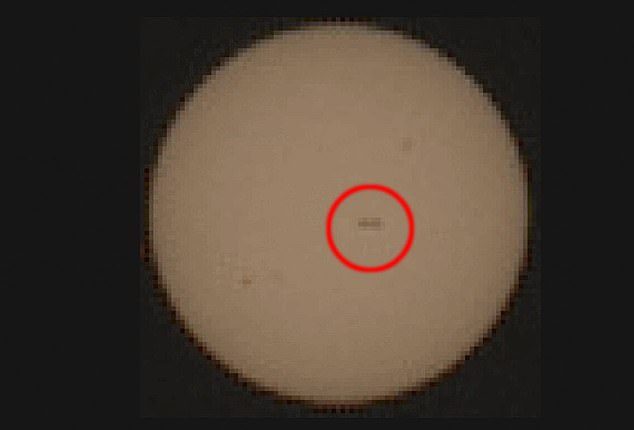
NASA has identified a giant sunspot on the sun that will likely continue to grow and move across the surface until it faces Earth next week.
Experts have warned that the dark region, which is cooler than the surrounding area, could release energetic explosions capable of knocking out our planet’s power grids.
The exact measurements of the sunspot are unknown, but NASA’s Perseverance rover snapped images of the spot as it sits more than 152 million miles from the sun.
The rover observed the sunspot on August 17 through August 20 while exploring the Jezero Crater on the Red Planet.


The exact measurements of the sunspot are unknown, but NASA’s rover was able to snap images of it while being more than 152 million miles from the sun
‘Because Mars is orbiting over the far side of the sun, Perseverance can see approaching sunspots more than a week before we do. Consider this your one-week warning: A big sunspot is coming,’ Spaceweather shared in a blog post.
The images, which have been turned into an animation, show a dim sun hanging in the blackness of space with a blurry, dark formation moving across the surface.
‘It takes a large sunspot to show up in these low-resolution images,’ Spaceweather shared.
Sunspots form when the sun’s magnetic field is about 2,500 times stronger than Earth’s.
Because of the strong magnetic field, the magnetic pressure increases while the surrounding atmospheric pressure decreases.
This lowers the temperature relative to its surroundings because the concentrated magnetic field inhibits the flow of hot, new gas from the Sun’s interior to the surface.


The images, which have been turned into an animation, show a dim sun hanging in the blackness of space with a blurry, dark formation moving across the surface
And sunspots appear dark because they are at least 4,000 degrees F cooler than the surrounding area.
However, the sun’s outer atmosphere can reach more than one million degrees.
NASA shared stunning images of our giant star in February, showing the range of temperatures surrounding it.
Using the Nuclear Spectroscopic Telescope Array (NuSTAR), the American space agency captured various X-rays emitted by the hottest material in our star’s atmosphere.
High-energy X-rays were observed in only a few locations, while low-energy X-rays and ultraviolet light were detected across the ball of gas’s entire face.
Scientists hope the new views will help them solve one of the sun’s biggest mysteries: why its outer atmosphere reaches more than a million degrees – at least 100 times hotter than its surface.
This post first appeared on Dailymail.co.uk









